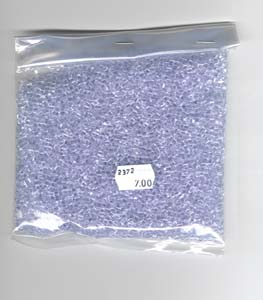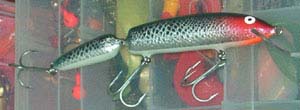


Homemade Propionate-lacquer using thinner.
Here is what you need for one liter of lacquer that is ready to be used:
Thinner, propionate grits 150gr ( circa 2dl) and an empty, air-tight,
(jelly, honey or paint) jar.
The easiest way to start is to make a small amount of lacquer, for instance:
0,75l, then you can see whether the lacquer is too fluid or too thick.
Pour thinner in a jar and add propionate grits (circa 1,5dl.). Don't fill
the jar until it's full, 2/3 is enough at this moment. Let the mixture stand
for a few hours or one day. Start shaking the jar first with a stick because
propionate is very solid in this stage when it's on the bottom of the jar.
Stir it with stick until it becomes softer/moveble and then close the jar.
Shake the jar with your hands. Repeat this a couple of times during a few
days or until you notice that lacquer begins to look smooth. Notice that if
you have added too much propionate it's quite thick and lumpy, add more
thinner to make it thinner. If the lacquer is too fluid add grits little by
little until it becomes thicker. Lacquer that is ready to be used is as
thick as wallpaint.
The melting process usually takes 3-6 days. It is ready much faster if you
shake the jar often.
If the lacquer becomes hard you can fix the lacquer by just adding more
thinner to it.
The know-how of the right thickness will be learned after the "training"!

Using propionate-lacquer for wobbler-covering.
When you have finished the shaping, glueing and so on for your wobbler you
can start dipping it in the lacquer. For the first dipping you can keep the
wobbler in the lacquer for about 30 minutes or as long as no more airbubbles
leave the wobbler's body. Then let it dry. You can repeat this dipping
process after circa 30 minutes or when the wobbler's body doesn't feel "
sticky" anymore. I used to dip my wobblers in the lacquer about 10-16 times
BEFORE painting it. If I use foil-cover I have to dip it at least four times
before painting it because somehow the paint keeps flowing of the bait so I
no longer do that. The same goes for when I use white propionate-lacquer. I
dip the lure 2-4 times after the last white dipping. White lacquer usually
flows very little after the dipping in clear lacquer, so it's better to dip
it until the flowing ends. Most of the times two or three dippings in clear
lacquer is enough.
In "dipping style" lacquering you have to choose the kind of paint that won'
t react with the thinner. Try your paint first on painted sticks or pieces
of wood before you paint your wobbler with it. Otherwise you get a
psychedelic looking wobbler. Water-dilutable paints (Deca-lack, Createx) are
a good choise! I use airbrush and mostly car-paints which I buy at a local
car-paint dealer. First, before shopping, I ask whether the paints are
suitable for thinner lacquer. After painting the lure, I usually dip the
wobbler circa 3-6 times.
If the air in the hobby room isn't dry enough, your wobblers may turn milky
white after the dipping. You can solve this problem by just dipping your
wobbler in clear thinner once. Humid air is no good for lacquering.
Remember also that inhaling thinner-fumes is not good for your health
either! Try to do this in a well ventilated room or use a respirator/mask.
Also smoking or fire in the same room when you are using this lacquer may
cause you burn-wounds or it may even set your hobby room or whole house on
fire because the fumes from the lacquer are highly inflammable.
 Dip your wobblers in the lacquer on both sides until both sides have been
covered completely. After the dippings are done I use a toothstick or a
screw to open the screw-eyes but not at that side where lacquer is flowing.
Dip your wobblers in the lacquer on both sides until both sides have been
covered completely. After the dippings are done I use a toothstick or a
screw to open the screw-eyes but not at that side where lacquer is flowing.
The right number of dippings is difficult to say. Usually you can't do that
too many times!!
Propionate-lacquer using aceton (in short).
You can also choose aceton to melt propionate grits. All recipes are the
same as with thinner but probionate melts faster on aceton. I use aceton
when I make white lacquer but, just as often, I use thinner. In clear
lacquer I only use thinner because I think it makes a tougher lacquer than
when using aceton. Aceton-made lacquer breaks easily if you have to tune
your wobblers. When I use white aceton lacquer I dip wobblers on thinner
lacquer a few times. The aceton lacquer is a good choice if need to make
your wobbler a little "fatter" because the aceton lacquer have to be much
thicker than thinner-made lacquer ( I don't know why). If you only want to
finish your wobbler in white, 3-4 dippings is enough ( if your lacquer is
thick enough). For thinner-made lacquer the white cover is fine after the
5-6 dippings (or even more!).
Don't mix thinner and aceton lacquers because the "mixed" lacquer may become
turbid.




 Dip your wobblers in the lacquer on both sides until both sides have been
covered completely. After the dippings are done I use a toothstick or a
screw to open the screw-eyes but not at that side where lacquer is flowing.
Dip your wobblers in the lacquer on both sides until both sides have been
covered completely. After the dippings are done I use a toothstick or a
screw to open the screw-eyes but not at that side where lacquer is flowing.